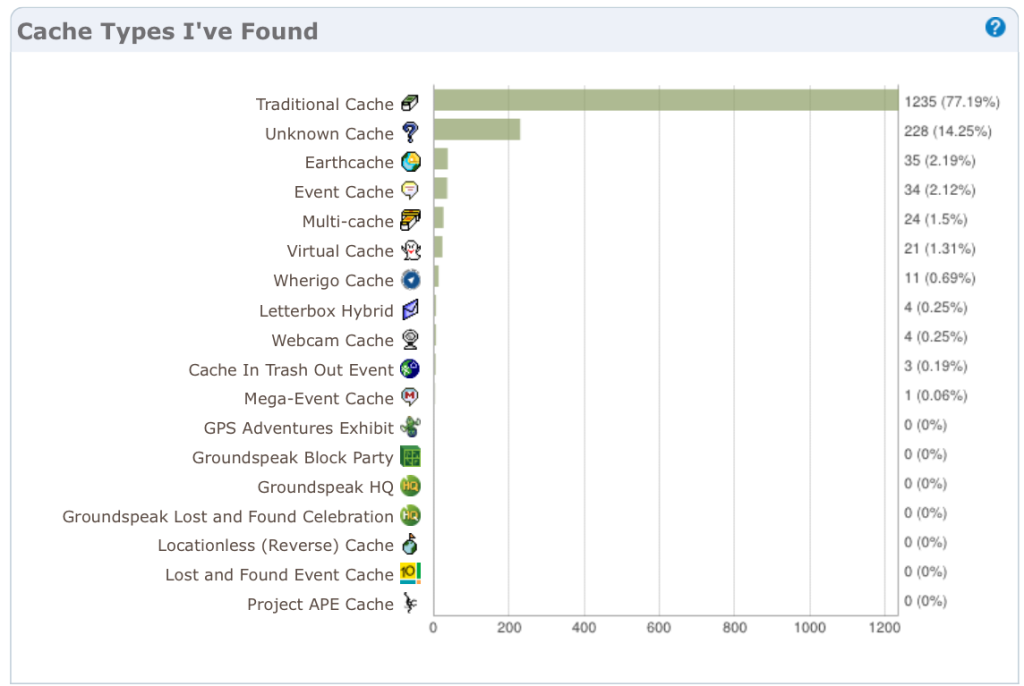Lab Caches: A First-Hand Account
There has been some talk in the last couple of months about Lab Caches. Groundspeak started lab caches in August 2013 as a means of testing out new kinds of geocaches. To the best of my knowledge, to date there have only been 2 opportunities to log lab caches: at the annual Block Party in Seattle last August, and at the NZ Mega in Auckland, New Zealand in October 2013. I was lucky enough to attend the NZ Mega and find some Lab Caches there, and will explain how they worked.
At the NZ Mega, the organizers released two groups of 5 lab caches, for 10 total over the course of the weekend. Lab Caches don’t conform to all of the regular caching rules: they’re not subject to proximity rules, they can be used to promote a business, they can be in areas with restricted hours of operation, and they can exist for a very short period of time. They also don’t require a physical logbook, and they’re logged in a different way from regular geocaches.
If you go to a mega event with Lab Caches, the organizers will give you a custom URL (web address) directing you to the lab cache listings. They’re not searchable on the regular geocaching maps, and in fact won’t appear in the cache listings if you search for them. You need the custom URL to find them. When you go to that URL, you will find a listing of the lab caches available, as well as how long you have to find them. Lab Caches have 2 timers: they say how long you have to find them, and again how long you have to log them. Here is an example of the screen you see:
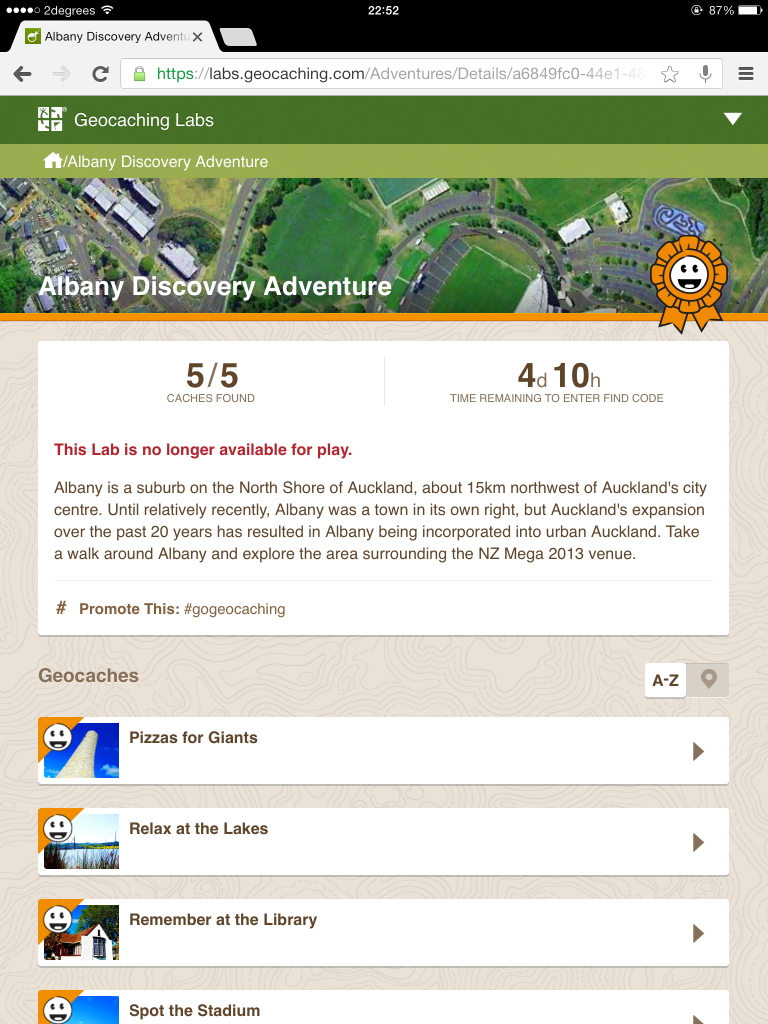
I took this screenshot after the finding period was over, but while there was still time to log the caches. When the lab caches were active, there was also a distance listed for each of the lab caches. Unfortunately, since this was in the web browser on my phone, the distance didn’t change as you walked: map reading was important to locating the cache.
If you clicked on an individual geocache listing from the menu screen, you can see what an individual lab cache looks like:
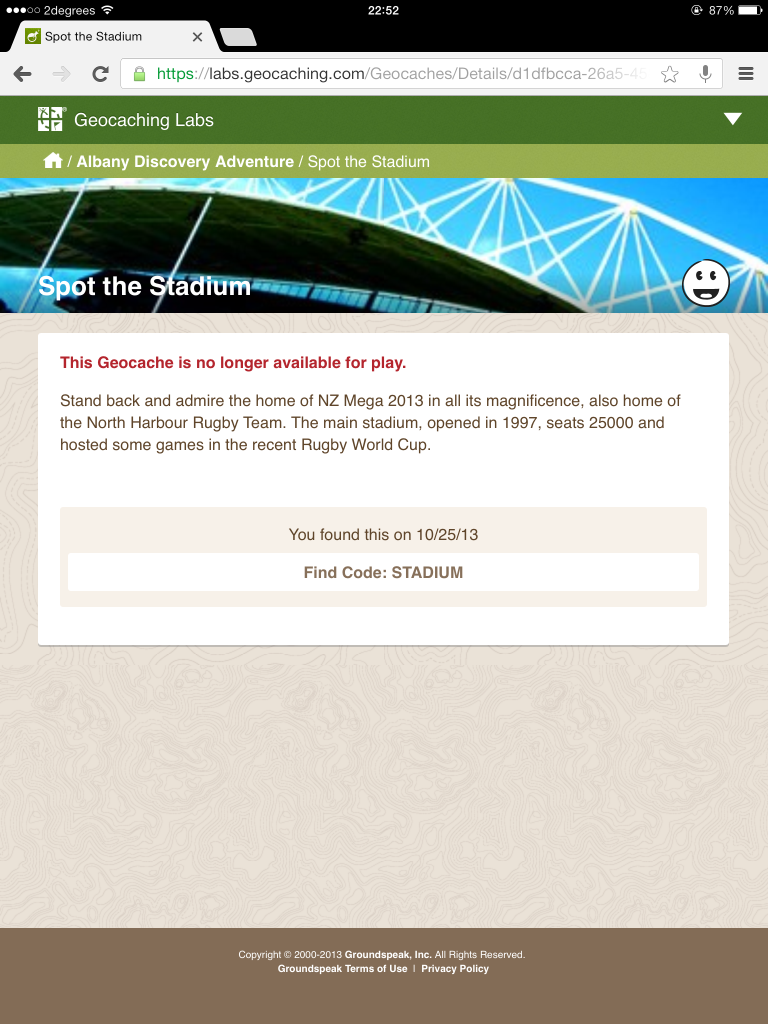
Looking a little sparse, don’t you think? When the lab cache was active, there was an integrated Google Map on the cache listing showing where the cache was and where you were. However, there is no description of the cache container, terrain, or any of the other usual geocache descriptions. Additionally, you can’t just log that you found a cache: you have to prove that you were there with a Find Code. There was a Find Code hidden inside all of the lab cache containers, usually printed on the lid and on the logbook. You have to enter the Find Code to log the cache. However, that’s all that you can log: you can’t add any comments, you can’t change the date you found it, or do anything besides get the smiley.
So, did I enjoy the lab caches I found? Absolutely. I thought they were different and I enjoyed that they were unique. At the NZ Mega, they did 2 sets of lab caches: the first 5 lab caches took you to scenic spots around the event location. Sometimes, the cache was a container hidden in the usual manner. However, one of them was inside of a library and was merely a sign on a bookshelf with the code word. They used the second set of 5 lab caches to highlight their sponsors, and you had to actually visit the stores/cafés that sponsored the mega in order to find the Find Codes. These were all hidden inside of the stores, on shelves with products, above the menu board, or in the front window. I liked that you had to enter the Find Code into the website in order to log the find. Obviously, you could tell other cachers the Find Code, much like people could share answers to puzzles, but my experience at the Mega was that everyone wanted to try out these new kinds of caches and didn’t want to share the codes.
I don’t think Groundspeak has decided just yet how to reflect lab caches in your profile listing on geocaching.com. The Lab Cache finds absolutely count towards your total find count: the find count underneath your caching name on all of your found logs includes the Lab Caches that you have found. Additionally, if you go to your public profile listing, you will see that they are listed there:
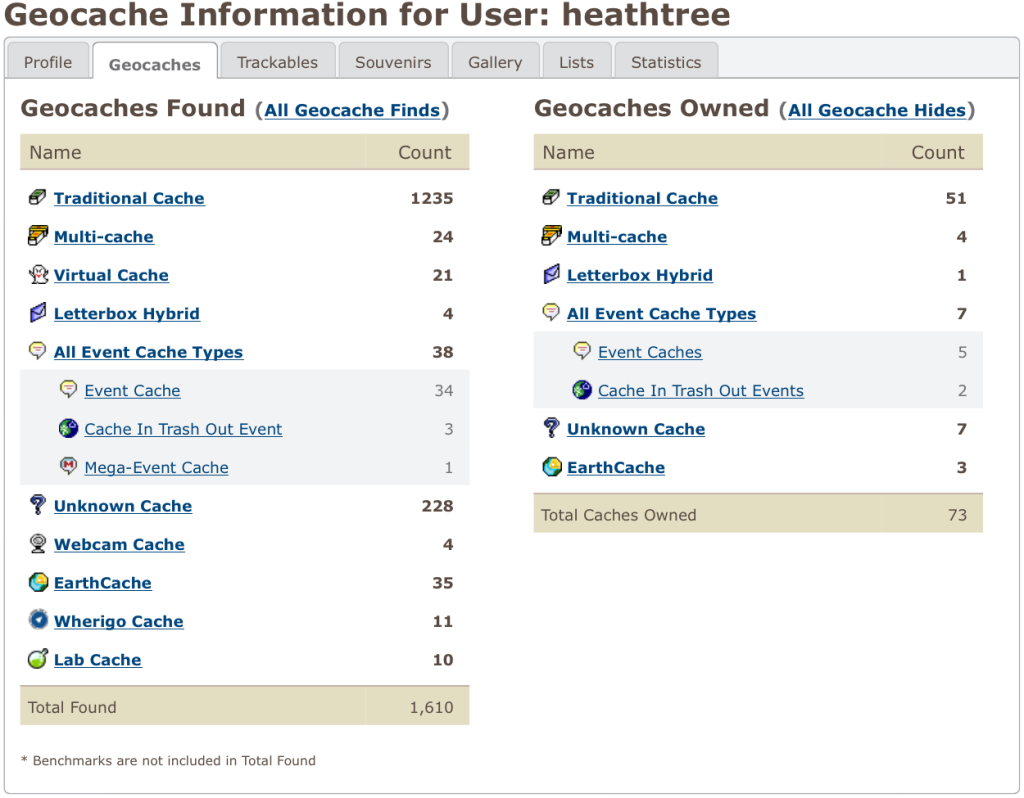
However, they’re not being consistent with the numbering. If you go to your statistics profile, Lab Caches are nowhere to be seen.
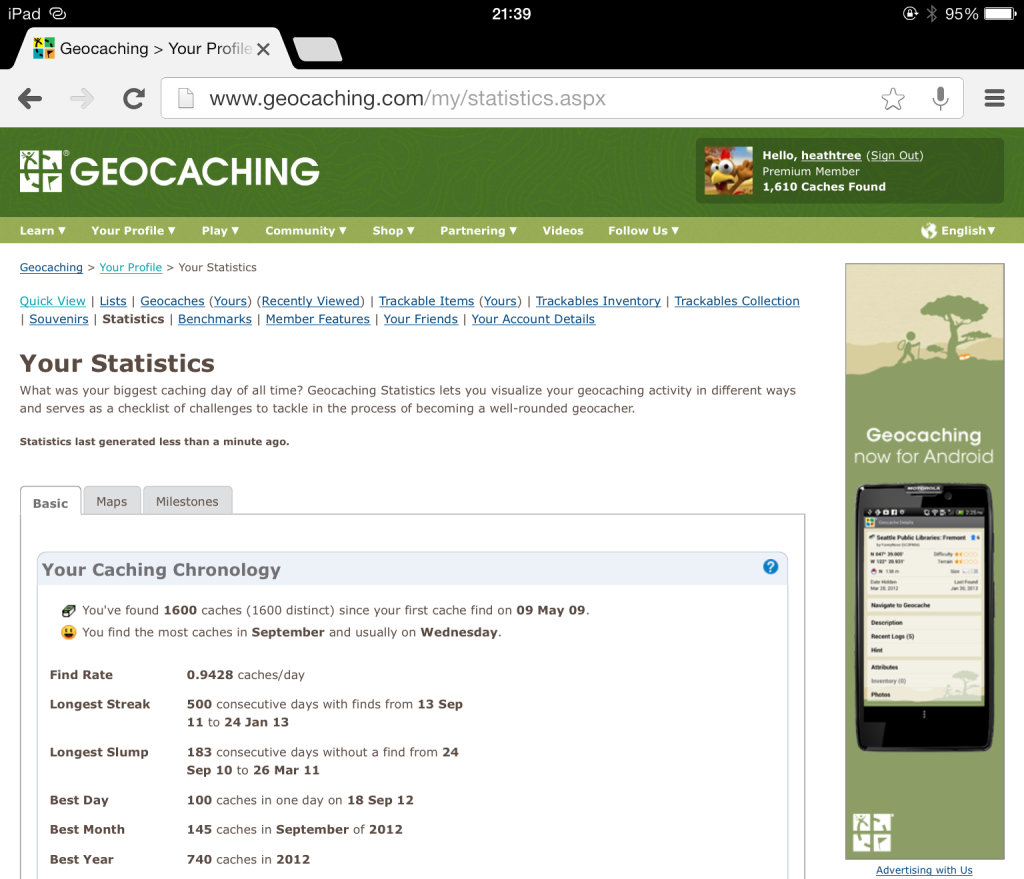
If you scroll down on the statistics page, you see that Lab Caches aren’t shown as cache types:
I hope that Groundspeak eventually updates the Statistics page to include Lab Caches, because the current setup is a bit confusing and distorts your milestones. One of the NZ Mega attendees deliberately found a Lab Cache as her 1,000 find so that it would be one of her milestone finds. However, her statistics tab didn’t include her 10 lab caches, so the cache that appeared as her 1,000th was actually the 1,010th cache she found. At the moment, I think the management of the statistics/milestone pages is a bit of an issue for the lab caches, and also one that I’m uncertain they’ll fix: you have the ability to delete the lab caches off your public profile entirely so that your public profile and statistics pages are the same. If that’s the route that Groundspeak is taking, then it is doubtful they’ll add Lab Caches to the Statistics pages, and this discrepancy between your actual finds and what your Statistics page shows will continue.
Lastly, it’s my understanding that Groundspeak is going to continue using Lab Caches as a means of trying out other kinds of different geocaches. It looks like they’re experimenting with one-time, individual geocaches this February for premium members, but these will still get lumped into the same Lab Cache category as the ones I described from the mega event. Whatever happens, Lab Caches are a way for Groundspeak to experiment with different kinds of geocaches, and I’d definitely recommend trying them if you get the opportunity.

